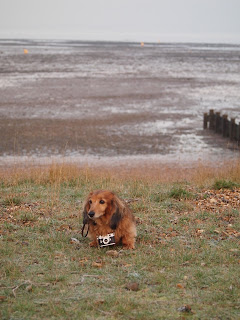I was at a memorial service down in Cornwall a few weeks ago and got talking to my youngest brother (Merlin) and a friend of his about how they'd been paddling in Mull recently. They'd had a great time, fallen in a fair amount and had gone to bed tired, happy and with aching shoulders.
They were discussing how they'd like to do a long trip, maybe the length of the Tamar or similar. I said they should have at least one lesson before attempting this - oh how they laughed! They both agreed there was nothing to this SUP lark, you just jumped on the board and off you went. When I asked them if they were using their core they said they thought so but (and then did a paddling action) it didn't really matter because they were perfectly able to get where they wanted to go, whatever. As for leashes? They're for dummies. Ok.
I persuaded Merlin to come and spend the day with me and said we could go paddling. I didn't tell him that I was actually going to give him a two hour lesson, half an hour on land technique the works, but he's a cool guy and I knew he'd be fine!
I always start my lessons explaining the parts of the board, what the different fins are for and talking about the leash. One of the main problems with not wearing a leash (apart from an obvious safety issue) is that if you fall in the board might go off one way and you go the other, possibly dropping the paddle as you go. Do you fetch the paddle or chase the board? And if you do get the paddle how do you then swim to the board? It's not that easy with a paddle. You'll probably swim to the board and realise you've lost the paddle. Not a great scenario. He'll wear a leash from now on!!
We then move on to discussing the paddle. I asked him if he's kayaked. He said he had. So then I demonstrated how a paddle is held when kayaking and how it moves the water. Then I turned the paddle around and said 'when you SUP you hold the paddle
this way round'. Most people are surprised. Merlin was very surprised. He had probably been paddling with the paddle the wrong way round all the time in Mull...
He even did it a couple of times with me. It's a hard habit to break.
He soon got the knack of using '90% body, 10% arms' though and was nicely powering through the SUP stroke.
By the end of the day I was an extremely proud sister. He was talking about courses that he was going to go on before taking to the Thames (he'd already decided to buy a McConks board) and now completely understood why it was a good idea to have at least one lesson! Even if he can't persuade his friends at least he will be safer and, although of course we all know it's not at all important, he'll look cooler than them out on the water!!























